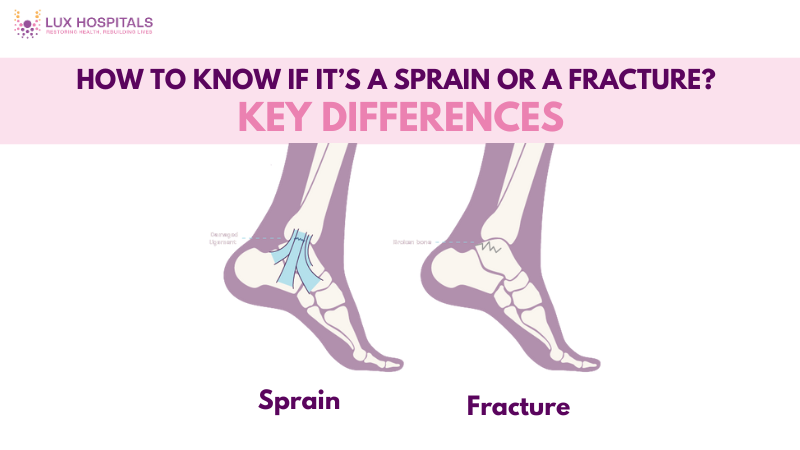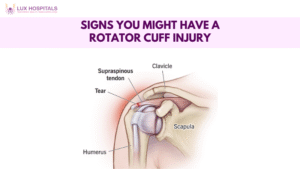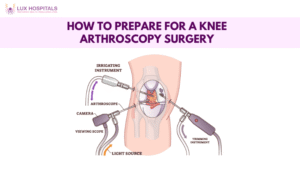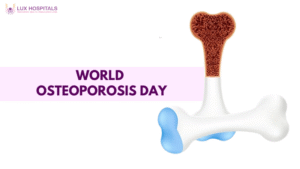How to Know If It’s a Sprain or a Fracture? Key Differences

Injuries to bones and joints are common, but sometimes it is difficult to figure out whether you are dealing with a Sprain or a Fracture. Both can cause sudden pain, swelling, and difficulty in movement, but the treatment and recovery time differ significantly. Understanding the key differences between a Sprain and a Fracture helps in getting timely medical attention and avoiding long-term complications. The indicators will be explained in this blog causes and treatment options so you can recognize whether your injury is a Sprain or a Fracture.
What is a Sprain?
When the ligaments that connect the bones at the joints are stretched or torn, they are sprained. It usually happens due to sudden twisting, falling, or awkward movement of the joint. Sprains are most commonly found in the ankles, wrists, and knees.
- Causes of Sprains: Sudden sports movements, stepping on uneven surfaces, or falling incorrectly.
- Symptoms of a Sprain: Pain, swelling, bruising, difficulty moving the joint, and a popping sensation at the time of injury.
- Recovery Time: Mild sprains typically heal within 1–2 weeks with rest, while severe ones may require several weeks of physical therapy.
When wondering whether it’s a Sprain or a Fracture, understanding ligament involvement is key.
What is a Fracture?
A break in the bone is called a fracture. It can be a small crack (stress fracture) or a complete break. Frequently, more severe than sprains, fractures necessitate a longer recovery time.
- Causes of Fractures: High-impact injuries, falls, direct trauma, or accidents.
- Symptoms of a Fracture: Intense pain, visible deformity, inability to move the area, severe swelling, and sometimes bone protrusion.
- Recovery Time: Depending on severity, a fracture can take 6–12 weeks or longer to heal, often requiring casts, braces, or even surgery.
It’s critical to distinguish between a sprain and a fracture because untreated fractures may lead to permanent damage.
Key Differences Between a Sprain and a Fracture
Here are the main differences to help you identify whether you have a Sprain or a Fracture:
- Pain Level: Both cause pain, but fracture pain is usually sharp, constant, and worsens with touch or movement.
- Swelling and Bruising: Severe in both, but fractures often lead to more intense swelling and possible bleeding inside the skin.
- Movement: Sprains may allow for limited movement, while fractures usually render it nearly impossible to move the affected area.
- Deformity: Fractures often cause visible changes in shape or alignment of the limb, while sprains do not.
- Sound at Injury: A sprain may cause a popping sound, whereas a fracture often produces a snapping or cracking noise.
Recognizing these differences is essential to determine whether your injury is a Sprain or a Fracture.
When to See a Doctor?
If you cannot decide whether it’s a Sprain or a Fracture, it is always better to consult a doctor. Seek medical help if:
- You cannot bear weight on the injured area.
- There is a visible deformity or bone protrusion.
- Swelling and pain worsen even after rest and ice.
- You experience numbness or loss of sensation.
Doctors may use X-rays or MRIs to confirm whether the injury is a Sprain or a Fracture.
Treatment Options for a Sprain
If it’s a Sprain, treatment usually follows the R.I.C.E. method (Rest, Ice, Compression, Elevation):
- Rest: Avoid putting weight on the injured joint.
- Ice: Apply ice packs to reduce swelling.
- Compression: Use elastic bandages to support the joint.
- Elevation: Keep the limb raised above heart level to reduce swelling.
For severe sprains, physical therapy or temporary bracing may be required. Differentiating between a sprain and a Fracture ensures you receive the proper treatment.
Treatment Options for a Fracture
If it is a Fracture, treatment involves stabilizing and healing the broken bone:
- Immobilization: Casts, splints, or braces are applied to keep the bone in place.
- Medication: Pain relief and anti-inflammatory medicines are prescribed.
- Surgery: Severe fractures may require the use of pins, plates, or screws to stabilize the affected bone.
- Rehabilitation: Physical therapy helps restore mobility and strength.
The correct diagnosis between a sprain and a Fracture ensures a faster recovery and prevents long-term complications.
Preventing Sprains and Fractures
While accidents cannot be avoided entirely, you can reduce the risk of a Sprain or a Fracture with these precautions:
- Wear proper footwear, especially during sports or outdoor activities.
- Stretch frequently and warm up before working out to prevent injury.
- Strengthen muscles around joints to protect ligaments and bones.
- Avoid slippery surfaces and use protective gear during physical activities.
Prevention is always better than trying to figure out whether it’s a Sprain or a Fracture after an injury.
Conclusion
Distinguishing between a Sprain and a Fracture is vital for proper treatment and healing. While both injuries cause pain and swelling, fractures usually involve severe pain and deformity and require more intensive medical care. Sprains, on the other hand, may recover with rest and supportive care. If you are ever unsure whether it’s a Sprain or a Fracture, seek medical attention immediately to guarantee a healthy recovery and prevent problems. Stretch frequently and warm up before working out to avoid complications and ensure a healthy recovery.
Frequently Asked Questions
Yes a Sprain or a Fracture can feel very similar, especially if the sprain is severe or the fracture is minor (like a hairline fracture). Both may cause intense pain, swelling, bruising, and difficulty moving the joint.
The Ottawa Ankle Rules are guidelines used by physicians to decide if an ankle injury needs an X-ray to check for a fracture. They focus on whether there is bone tenderness in specific spots and whether the person can bear weight immediately and for a few steps.
Sometimes hearing a sound like a crack or sprain at the moment of injury suggests a fracture, but it’s not definitive. A Sprain or a Fracture may both cause sounds — severe sprains can produce a “pop,” while fractures might yield a cracking or grinding sound.
You should get an X-ray if you have a suspicion that it might be a Fracture, especially if there's severe pain, inability to bear weight, visible deformity, or persistent swelling & pain after a day or two.
A mild Sprain may begin to improve within a few days and often takes 1–3 weeks to heal significantly, although more severe sprains can take several weeks to a few months to heal. Fractures typically require more time — simple fractures may heal in 6-8 weeks, while more complex or displaced fractures needing surgical intervention can take several months.




















